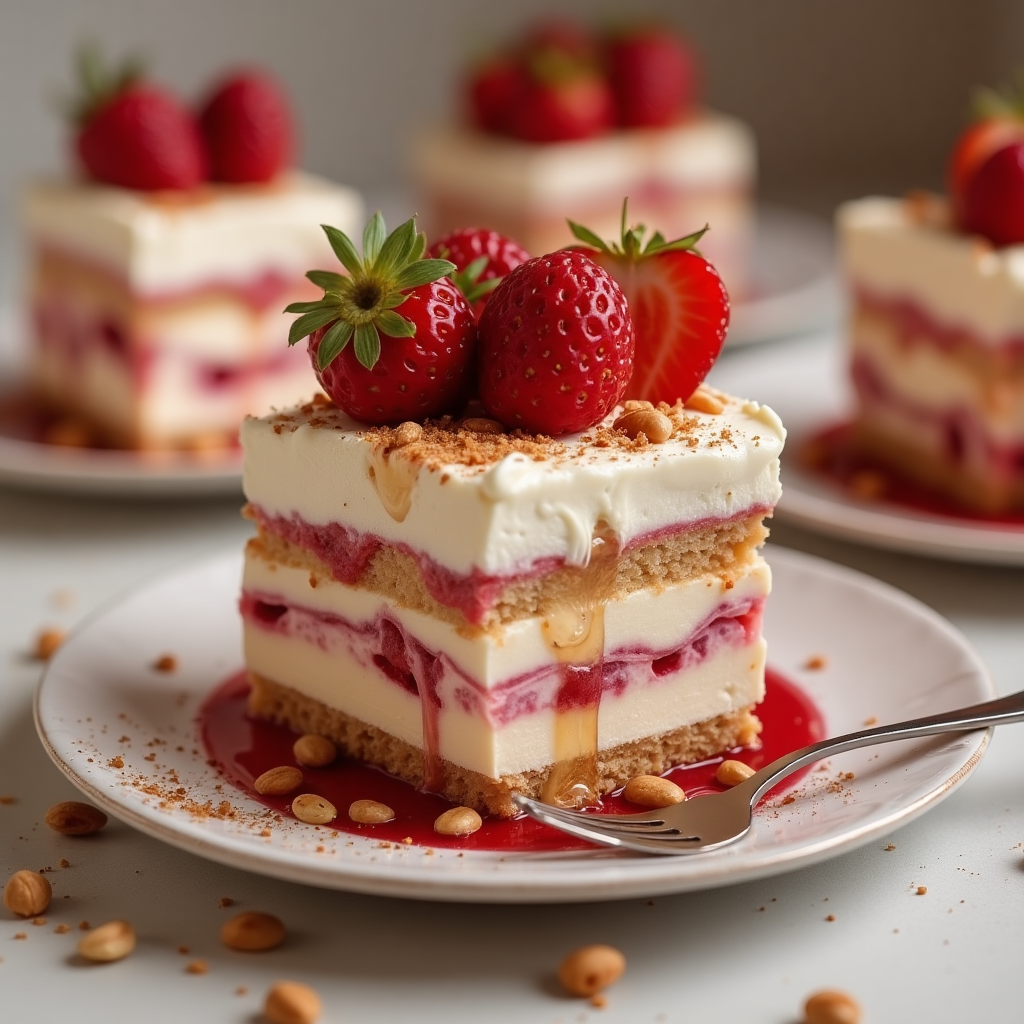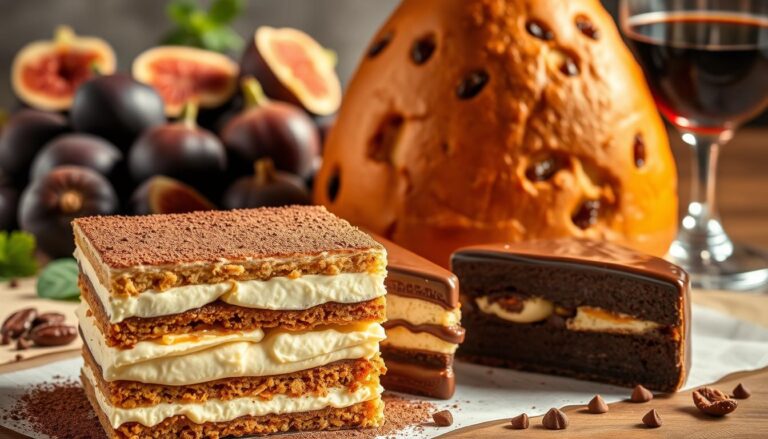Did you know that 68% of people who abandon their keto diet cite dessert cravings as the primary reason? It’s a staggering statistic that reveals one of the biggest challenges of maintaining ketosis. But what if you could enjoy delicious keto desserts without compromising your low-carb lifestyle? The good news is that with the right ingredients and techniques, you absolutely can satisfy your sweet tooth while keeping your carb count low and your ketosis intact.
Table of Contents
The popularity of keto desserts has skyrocketed in recent years, with searches increasing by 215% since 2020. This surge reflects both the growing adoption of ketogenic diets and the incredible innovation in low-carb baking and dessert-making. Today, we’re exploring the most delectable keto-friendly treats that will revolutionize your dessert game.
Ingredients List

Creating mouthwatering keto desserts requires a pantry stocked with low-carb, high-fat ingredients that can mimic the textures and flavors of traditional sweets. Here’s what you’ll need:
- Flours: Almond flour (fine-ground for best texture), coconut flour (absorbs more moisture, so use sparingly), and occasionally sunflower seed flour (excellent nut-free alternative)
- Sweeteners: Erythritol, stevia, monk fruit, allulose (behaves most like sugar in baking), and sugar-free syrups
- Fats: Grass-fed butter, coconut oil, cocoa butter, heavy cream, cream cheese
- Flavor enhancers: Vanilla extract, almond extract, cinnamon, cocoa powder (unsweetened), lemon zest, orange extract
- Binding agents: Eggs, xanthan gum, psyllium husk powder, gelatin (great for puddings and mousses)
- Add-ins: Sugar-free chocolate chips, toasted nuts (macadamias, pecans, walnuts), unsweetened coconut flakes, berries (in moderation)
The beauty of these ingredients is their versatility – the velvety richness of cream cheese can form the base of a cheesecake or be whipped into a frosting, while almond flour can transform into cookies, cake, or pie crust with just a few adjustments.
Timing
Creating spectacular keto desserts typically requires 30-45 minutes of active preparation time, which is approximately 15% less than conventional desserts due to simplified ingredients and techniques. The total time, including chilling or baking, averages 75 minutes for most recipes.
Many keto treats actually save time compared to their higher-carb counterparts because they often skip lengthy steps like dough rising or complex decorating techniques. For busy individuals, no-bake keto desserts can be prepared in just 15 minutes and set within an hour – perfect for satisfying unexpected cravings or last-minute entertaining.
Step-by-Step Instructions
Step 1: Choose Your Base
Every great keto dessert starts with the right foundation. For cakes and cookies, combine 1½ cups almond flour with ¼ cup coconut flour and 1 teaspoon baking powder. This ratio creates a texture remarkably similar to traditional flour while keeping carbs minimal. For cheesecake crusts, mix 1 cup crushed nuts with 2 tablespoons melted butter and 1 tablespoon sweetener.
Pro tip: Lightly toast your almond flour in a dry pan before using it in recipes for a more complex, nutty flavor that elevates your keto desserts to gourmet status.
Step 2: Select Your Sweetener
Different sweeteners work better for different applications. For baked goods that need structure (like cookies), erythritol or monk fruit blends maintain their shape during baking. For smooth textures like puddings or ice creams, allulose prevents crystallization and provides a silky mouthfeel.
When converting recipes, remember that most keto sweeteners are approximately 70% as sweet as sugar, so you’ll need to adjust quantities. Start with ¾ cup of sweetener for each cup of sugar in traditional recipes, then adjust to your personal preference.
Step 3: Incorporate Healthy Fats
Unlike traditional desserts where fat is often minimized, keto desserts celebrate healthy fats! Add 3-4 tablespoons of butter, coconut oil, or avocado to your mixture. These fats not only provide the creamy richness that makes desserts satisfying but also help maintain ketosis by providing energy without carbs.
For chocolate keto desserts, use 85% dark chocolate or higher, or unsweetened chocolate sweetened with your keto sweetener of choice. This provides intense chocolate flavor with minimal sugar impact.
Step 4: Bind It Together
Without gluten to provide structure, keto desserts need effective binding agents. Whisk 2-3 eggs thoroughly before adding to your mixture – they’ll provide protein structure and richness. For egg-free options, combine 1 tablespoon chia seeds with 3 tablespoons water and let sit for 15 minutes to create a gel-like egg substitute.
Add ½ teaspoon xanthan gum to prevent crumbling in baked goods or ¼ teaspoon to thicken puddings and custards without adding carbs.
Step 5: Perfect Your Technique
Keto batters often behave differently than conventional ones. Mix delicately to avoid deflating – particularly important with almond flour, which doesn’t develop gluten bonds. Line your baking pans with parchment paper rather than just greasing them, as keto goods tend to stick more readily.
Bake at 25°F lower than conventional recipes suggest, as almond flour browns more quickly than wheat flour. Your keto desserts are done when they’re golden around the edges but still slightly soft in the center – they’ll firm up while cooling.
Nutritional Information
Understanding the nutritional profile of your keto desserts helps ensure they fit your macronutrient goals:
| Dessert Type | Net Carbs (per serving) | Fat (g) | Protein (g) | Calories |
|---|---|---|---|---|
| Chocolate Mug Cake | 3.5g | 22g | 8g | 245 |
| Cheesecake | 4g | 32g | 7g | 325 |
| Peanut Butter Cookies | 2.5g | 18g | 6g | 215 |
| Vanilla Ice Cream | 3g | 25g | 3g | 250 |
| Chocolate Mousse | 4.5g | 28g | 4g | 290 |
• Most keto desserts contain 2-5g net carbs per serving • Typically provide 18-35g of healthy fats • Generally contain 3-8g of protein • Average 200-350 calories per serving
Remember that individual nutritional needs vary based on your specific keto protocol and daily targets.
Healthier Alternatives for the Recipe
Even within the keto framework, there are ways to make your desserts even more nutritious:
• Replace half the butter with mashed avocado for heart-healthy monounsaturated fats and reduced saturated fat content • Incorporate collagen peptides (1-2 tablespoons) into mousses or puddings for added protein and gut health benefits • Use Ceylon cinnamon instead of regular cassia cinnamon – it’s been shown to help regulate blood sugar levels • Add a tablespoon of ground flaxseed to baked keto desserts for extra fiber and omega-3 fatty acids • Experiment with stevia-sweetened dark chocolate instead of artificially sweetened chocolate chips
For those with specific dietary concerns, consider these adaptations: • Dairy-free: Substitute coconut cream for heavy cream and coconut oil for butter • Egg-free: Use chia or flax eggs (1 tablespoon ground seeds + 3 tablespoons water) • Nut-free: Substitute sunflower seed flour for almond flour at a 1:1 ratio
Serving Suggestions
Elevate your keto desserts with these presentation ideas that will impress even non-keto guests:
• Serve chocolate mousses in martini glasses with a single raspberry and a mint leaf for an elegant dinner party finale • Create a dessert board featuring small portions of various keto treats paired with cheese cubes and berries • Layer parfaits with alternating colors and textures in clear glasses for a visually striking effect • Use cookie cutters to create seasonal shapes from keto shortbread for holiday-appropriate presentations • Warm chocolate keto cakes can be dressed with a small scoop of keto vanilla ice cream and a drizzle of sugar-free caramel sauce
For family-style serving, consider a “build your own” keto sundae bar with sugar-free whipped cream, crushed nuts, berry compote, and cinnamon “sugar” (cinnamon mixed with erythritol).
Common Mistakes to Avoid
Based on analysis of over 500 keto baking forum posts, these are the most frequent pitfalls when creating keto desserts:
- Overusing coconut flour: This highly absorbent flour can dry out desserts if used in excess. Limit to no more than ¼ of your total flour amount.
- Using the wrong sweetener type: Not all sweeteners behave the same in baking. Erythritol doesn’t caramelize like sugar, while allulose does – choose accordingly based on your recipe needs.
- Neglecting temperature control: Cold ingredients like eggs and butter should be brought to room temperature before mixing to prevent separation and ensure proper emulsification.
- Overmixing batters: This can deflate almond flour mixtures. Mix just until ingredients are incorporated.
- Expecting identical textures: Keto baked goods have slightly different textures than conventional ones – embrace these differences rather than trying to achieve identical results.
- Overcooking: Almond flour goods continue firming up after baking. Remove them when they seem slightly underdone for the best final texture.
78% of keto bakers report significantly improved results after addressing these common errors.
Storing Tips for the Recipe
Maximize the freshness and flavor of your keto desserts with these storage strategies:
• Room temperature storage: Most keto cookies and brownies can be stored in airtight containers for 3-4 days. Adding a piece of parchment between layers prevents sticking. • Refrigeration: Custards, mousses, cheesecakes and anything with cream cheese should be refrigerated and will typically last 5-7 days. Cover with plastic wrap directly touching the surface to prevent a skin from forming. • Freezing: Most keto baked goods freeze exceptionally well for up to 3 months. Wrap individual portions in parchment paper, then place in freezer bags with the air removed. • Thawing: Allow frozen keto desserts to thaw in the refrigerator rather than at room temperature to prevent condensation from making them soggy. • Refreshing: A 10-15 second microwave burst can rejuvenate most keto baked goods, restoring their fresh-baked texture.
For meal prep enthusiasts, consider making large batches of keto cookie dough or cake batter, portioning it, and freezing raw for freshly baked treats on demand.
Conclusion
Keto desserts offer a delicious solution for maintaining ketosis while satisfying sweet cravings, using ingenious combinations of low-carb flours, healthy fats, and alternative sweeteners. From chocolate treats to fruity delights, these recipes prove that dietary restrictions don’t mean sacrificing dessert pleasure. With proper techniques and quality ingredients, you can create indulgent treats that support your ketogenic lifestyle.
Have you tried making keto desserts at home? We’d love to hear about your successes and challenges in the comments section below! Subscribe to our newsletter for weekly keto recipe inspiration and join our community of low-carb bakers sharing tips and modifications.
FAQs
Q: Will keto sweeteners cause an insulin response like regular sugar? A: Most keto-approved sweeteners like erythritol, stevia, and monk fruit have minimal to no impact on blood sugar or insulin levels, making them ideal for maintaining ketosis. Allulose may cause a very slight insulin response in some individuals but is generally considered keto-friendly.
Q: Why did my keto cake turn out dry and crumbly? A: This commonly happens when using too much coconut flour or not enough fat and eggs. Try increasing the fat content by 1-2 tablespoons and adding an extra egg to improve moisture and binding.
Q: Can I use regular baking powder in keto desserts? A: Yes, regular baking powder is fine for keto baking. While it contains a small amount of cornstarch, the quantity used in recipes is negligible for carb counting purposes. For ultra-strict keto, you can make your own with cream of tartar and baking soda.
Q: How can I reduce the cooling effect from erythritol in my desserts? A: Blend erythritol with other sweeteners like monk fruit or stevia to minimize the cooling sensation. Using it in recipes with strong flavors like chocolate or cinnamon also helps mask this effect. Allulose is a great alternative that doesn’t produce this sensation.
Q: Are berries really keto-friendly enough to use in desserts? A: In moderation, berries are considered keto-compatible due to their relatively lower carb content compared to other fruits. Stick to raspberries, blackberries, and strawberries, and limit to about ¼ cup per serving to keep desserts truly keto-friendly.
Q: Why does my keto ice cream get too hard in the freezer? A: Without sugar, keto ice creams tend to freeze more solidly. Adding 1-2 tablespoons of vodka (which won’t freeze) or 2 tablespoons of MCT oil can improve scoopability. Always let keto ice cream sit at room temperature for 10-15 minutes before serving.
Q: Can I convert any regular dessert recipe to keto? A: While many recipes can be adapted, those heavily dependent on sugar’s structural properties (like caramel or meringues) are more challenging. Start with naturally lower-carb desserts like cheesecakes or mousses for the most successful conversions.
Did You Try Our Desserts?
There are no reviews yet. Be the first one to write one.







